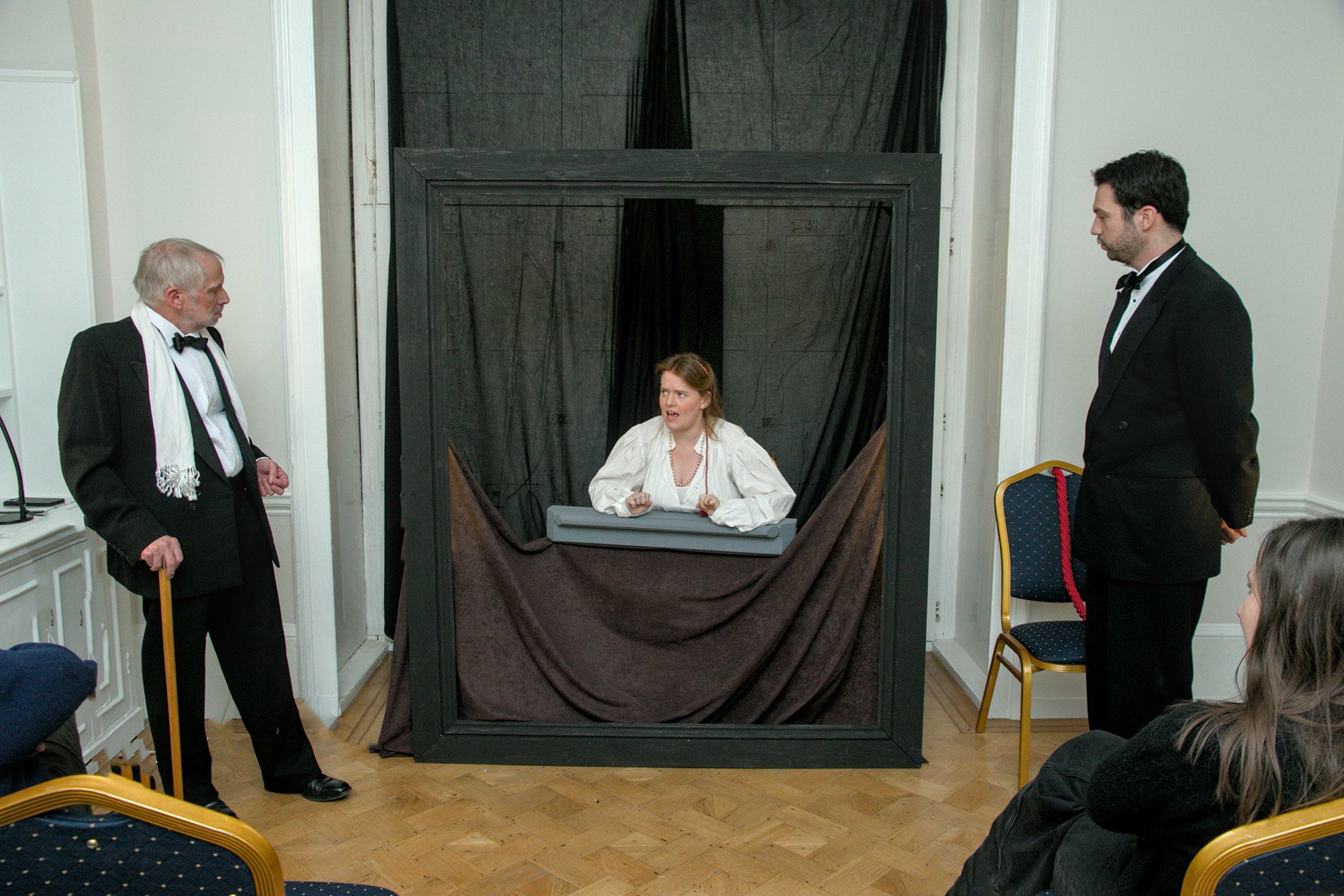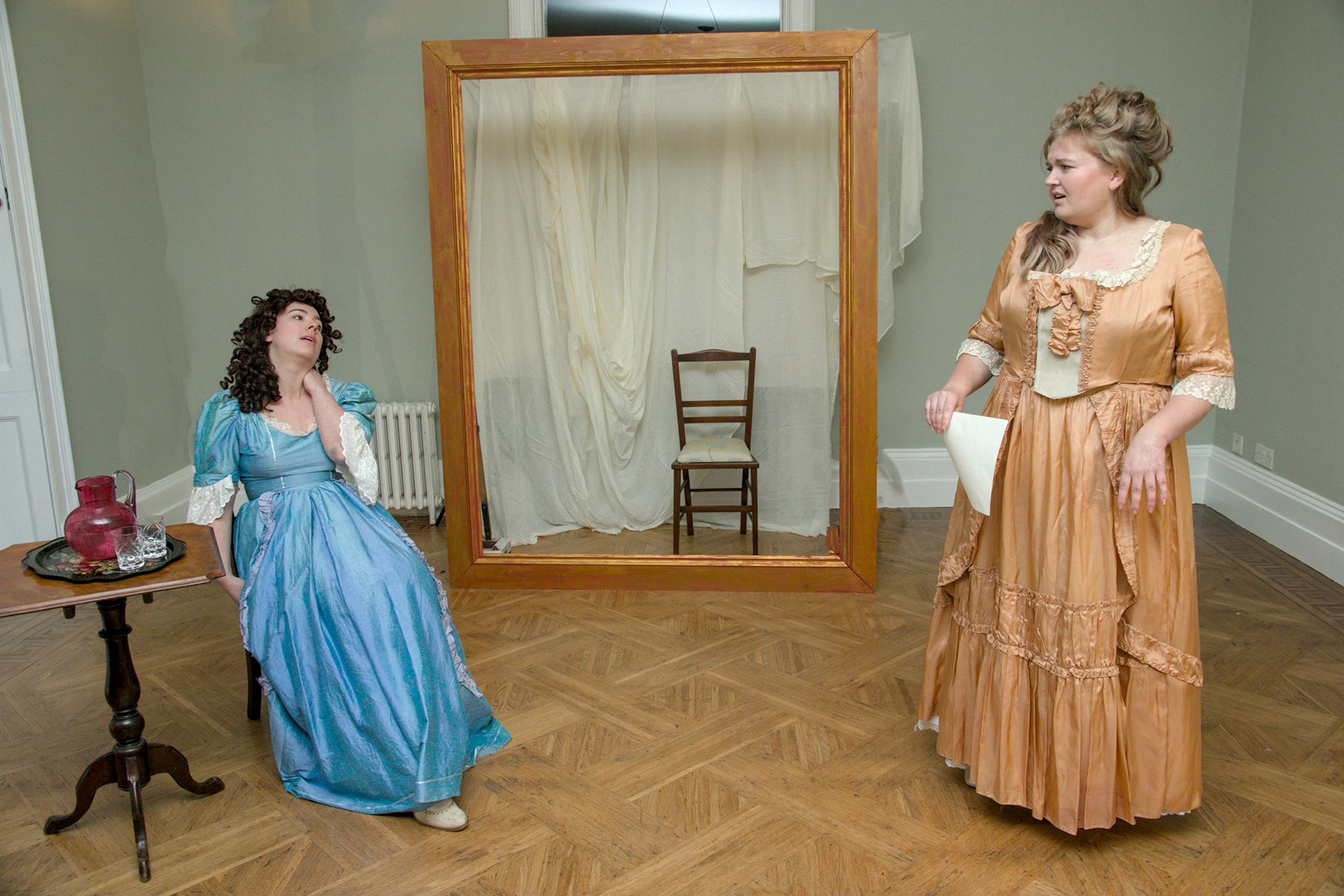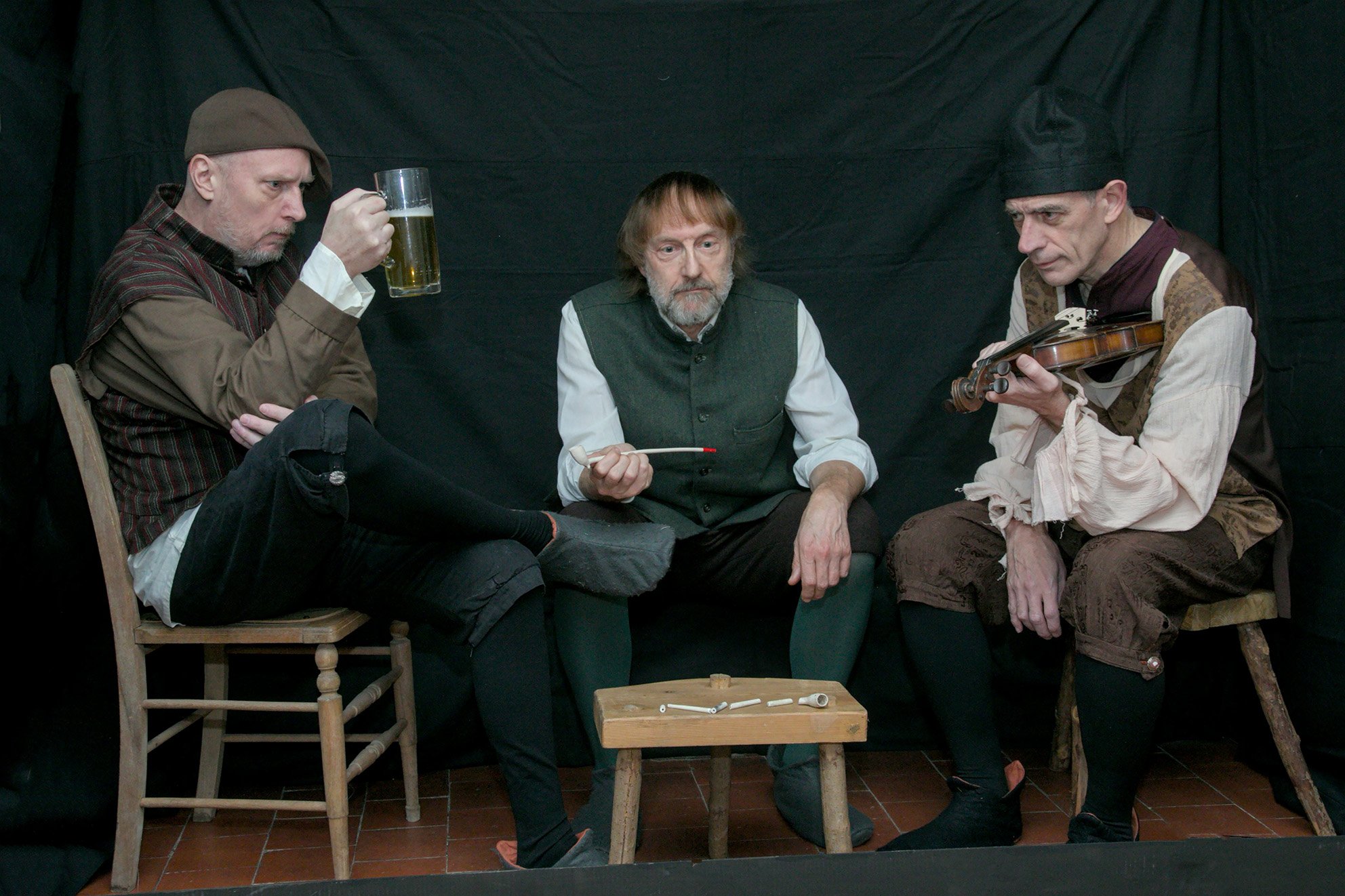Could the Dulwich Players match last year's festive offering, the beautifully staged Christmas at Bell House? They could and they did. A Private View was a promenade around the roomsof Bell House, watching Picture Gallery paintings come brilliantly to life and tell their stories, and making full use of Bell House’s architecture and atmosphere.
From the moment we crossed the threshold, we were in a post-WW2 Bell House, enjoyingmulled wine and mince pies while listening to a cocktail pianist. Then Sir Gerald Kelly, President of the Royal Academy, and Anthony Blunt, Surveyor of the King’s Pictures (cue laughter from the audience who knew he was also moonlighting as a Soviet spy at the time), explained that we would see four vignettes based on Gallery paintings that had been storedand repaired at Bell House after their wartime evacuation to Wales. Following a surprise visitfrom the Queen (later the Queen Mother) who graciously met some audience members, we were divided into four groups and ushered into the plays.
As we walked into the first room, we saw an enormous frame, with Rembrandt’s ‘Girl in the Window’ within it and two figures standing outside discussing the painting’s subject. We laughed as the Poussin expert Sir Guy Cairncross fawned over a Woosterish Lord Lamptonde Worm, who beseeched him not to be so formal: ‘Just call me Sir’. But then we watched as the Girl came to life and rolled her eyes at Sir Guy’s objectification of her looks and dismissal of her views because he had assumed she was a working girl or a prostitute. Cairncross’s views led to even the seemingly hard-of-thinking Lampton trying to speak up for the Girl, at which point we silently cheered as she took the narrative into her own hands with a loud ‘Enough!’. The scene ended as she told the two men who she really was but as she whispered it to them, we only have their impressed reaction. Perhaps they’ll listen before opining in future.
The second room held Gainsborough’s ‘Linley Sisters’. They stepped out of the frame, at first bemoaning the length of time they were having to pose, then moving on to discuss their concerts and Eliza’s slightly rackety private life (should an unmarried girl even have had a private life in 1772?). These musical sisters were beautiful, well-paid celebrities yet in their conversation we recognised themes such as their lack of agency, their dependence on others for money and their reputations being carelessly traduced; themes mirrored in literature like Pride and Prejudice and even in today’s world, with Britney Spears’ conservatorship. Mary lightened the mood by singing and Eliza joined in, their beautiful harmonies brought the vignette to an end.
Moving upstairs, we walked into a darkened room where Sarah Siddons, The Tragic Muse, sat behind her frame. Macbeth, her greatest role, was being filmed in front of her, with the actress playing Lady Macbeth, the director and the producer becoming increasingly at odds about the film’s direction until the production broke down completely, at which point Mrs Siddons crossed the frame to rescue the film. The Gallery’s painting is a 1789 replica, the 1784 original is in California, so we now had the delightful development that the Californian Mrs Siddons (much younger and more glamourous and, well, American) followed her out of the frame. There followed some quick repartee, including quotes ranging from Hamlet to Star Trek Next Generation then with the explanation that anyone can step into a painting, ‘relax’ and be absorbed into it leading to the director being tricked into assuming Mrs Siddons position while she became the actress (‘never actor’) and the actress became the director, not that the Tragic Muse needed direction.
The final painting, ‘Three Peasants at an Inn’, is the only painting not currently on display at the Gallery which didn’t matter as the Players staged it so that we know exactly how it looks. It was being explained to the Queen by Mrs Newton-Sharp, a society lady and keen amateur art historian (her day job was at Harrods). The Queen was given the conventional discourseon this type of painting: ‘a motley slovenly crew’, a display of peasant foolishness and self-indulgence with drunkenness to the fore. Unlike the other vignettes, nobody noticed that the painting’s subjects could talk, allowing them to give a running commentary on thisdescription of their characters. As the women left, the peasants rose from the frame, stretched their limbs and explained that they were in fact a revolutionary, a scientist and a musician. Many of us in the audience will be looking at such genre paintings in a new way in future.
How lucky we are to have such paintings on our doorstep and such talented people as the Dulwich Players to bring them to life in this innovative way.
Photo credit: Ian Jones





